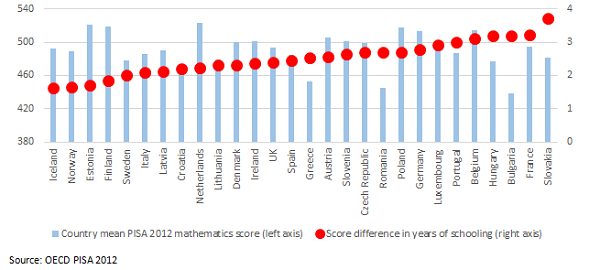In Europe, the year 2015 will be remembered as the year of the “refugee crisis.” Hundreds of thousands of refugees have crossed treacherous waters and borders to flee war and persecution in Syria and the wider Middle East and Africa in search of protection in the European Union. Transit and destination countries have been struggling to manage the refugee flow and to register and shelter the new arrivals. At the same time, the EU is debating how best to tackle the sources of forced displacement and is stepping up support to Turkey, Jordan, and Lebanon, who host the lion’s share of Syrian refugees. But largely missing from the frenetic activity so far, except in Germany, has been a thorough discussion of the next step: how to manage the integration of refugees in host countries beyond the initial humanitarian response of shelter and food.
Successful integration efforts will benefit from information on the profile of refugees such as their age, gender, education, skills, and employment background. While systematic data so far remains scarce, United Nations records shows that more than half of all Syrian refugees are under the age of 18. Such a large share of children and youth is a major opportunity: if host countries ensure quick access to quality education and training opportunities, they can equip this young, but disadvantaged, generation of refugees with the tools to succeed—either in their host country or, in the case of return, eventually back in their home country. Education is also a key vehicle to transmit host country values and provide orientation on civic life. It is obvious: Education and training will be central to successful integration efforts.
But here comes the problem. Education systems in Europe often do a poor job in providing opportunities for disadvantaged students. Data from the Program for International Student Assessment (PISA), which assesses mathematics, reading, and science competencies among 15-year-old students in more than 60 countries around the world every three years, shed light on how inclusive education systems are. For example, in the latest PISA round in 2012 the difference in reading and mathematics competencies between students from the richest and poorest socio-economic quintile in much of the EU was the equivalent of between two and three years of schooling—at age 15. In Belgium, Hungary, Bulgaria, France, and the Slovak Republic, it is three years and more. In contrast, the gap in Finland and Estonia—whose 15-year-olds on average achieve some of the highest PISA mathematics and reading scores in the EU—is less than 2 years (see Figure 1).
Figure 1: Most of Europe does a poor job in integrating disadvantaged students

One reason for this gap is that schools in countries with large performance gaps such as Hungary or Slovakia are more often segmented by socio-economic background. Poor students are predominantly in schools with many other disadvantaged students, while the privileged stay among themselves. Sometimes segregation manifests itself by school type: In Bulgaria, Slovakia, and Hungary students from disadvantaged backgrounds tend to be disproportionally in vocational secondary schools where the quality of schooling appears poorer and their resulting reading and mathematics skills are weaker. Immigrant children in many European countries often end up in schools with other disadvantaged students and are more likely than non-immigrant students to be in vocational schools, after accounting for socio-economic status and their scores in PISA.
Closing the education gap for refugee children
So how do we make education a success for refugee students in EU countries? Initially, refugee children and youth need targeted support as they enter the school system, such as through intensive language and general induction programs to allow them to participate in mainstream classes as soon as possible. Some might come with war trauma, suggesting that schools needs to offer psychological support. But beyond that, refugees will benefit from measures that make education systems more inclusive. This includes ensuring that students are not segmented into different types of schools based on socio-economic grounds, promoting early childhood development and education programs, making their parents part of the education process, offering remedial programs, and equipping teachers with the tools to provide support to students with multiple disadvantages. It is important that students feel welcome at school. Today, that is not the case everywhere in Europe: While in Spain, Finland or the Netherlands more than 80 percent of first generation immigrant students reported that they belong at school, less than 50 percent did so in France and only 60 percent in Belgium.
The Syrian refugee crisis is unlikely to be a one-off phenomenon. Given the tensions in Europe’s wider neighborhood, refugee flows to the EU might well become the “new normal” over the coming years. While this can become an opportunity for aging Europe, it is time to prepare for the “new normal”. And this starts with making Europe’s schools more inclusive.



Commentary
Education is the key to integrating refugees in Europe
November 23, 2015